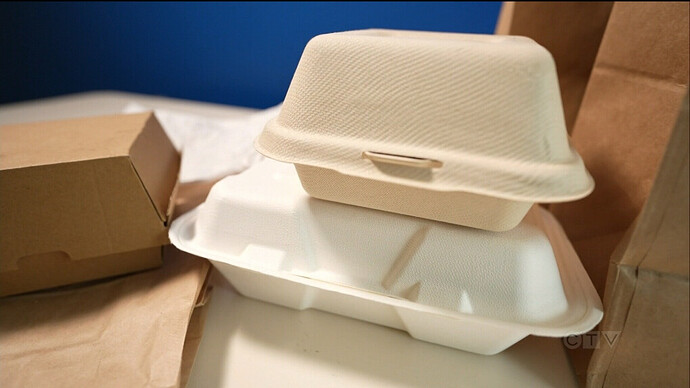The prohibition of single-use plastic products is crucial to Canada’s plan of achieving zero plastic waste by 2030, but with the ban, environmentalists are growing increasingly concerned about the amount of paper packaging being used in its place.
“We absolutely need to shift away from using plastics as much as we do, but trading in plastic pollution for deforestation and forest degradation is not the answer,” Canopy founder and executive director Nicole Rycroft told CTV News. “We really need to make sure we do not create another environmental disaster.”
Rycroft’s not-for-profit organization works to protect the world’s forests by helping companies like Walmart and H&M ensure their packaging doesn’t rely on paper and is environmentally friendly.
She estimates more than three billion trees—many of which are old-growth and endangered—are logged every year to make paper-based products like bags, straws and food containers.
RELATED STORIES
-
How fast food chains, grocery stores are responding to Canada’s plastics ban
-
Your favourite brand of toilet paper may be cut from an important Canadian forest
-
How a 10-year-old Canadian girl is fighting to eliminate grocery store produce stickers
-
‘Compostable’ food packaging may contain hazardous ‘forever chemicals’: Canadian study
RELATED LINKS
“We’re seeing a surge in global bans on single-use plastics, including here in Canada, and with paper quickly replacing those products, there’s increased pressure on the world’s forests.”
Canada’s ban on single-use plastics, which began in December 2022, prohibits the manufacturing and import-for-sale of products ranging from checkout bags and cutlery to takeout containers and stir sticks.
With the ban, single-use plastic consumption is starting to wane, but in many cases those products have been replaced by paper alternatives. Rycroft points to grocery stores, now providing paper bags at checkout, as an example of that.
“I think everyone is aware of the saying that forests are the lungs of our planet and so this is a really critical moment and we need to take steps to keep forests standing, rather than increase the pressures on them to provide the fibre for bags, pizza boxes, cutlery and straws.”
Adding to the worries of increased deforestation are concerns about the large amounts of energy and water required to make paper products.
The Netherlands-based and UN-backed Institute for Water Education says it can take anywhere from two to 13 litres of water to make a standard piece of paper.
Another potential problem with single-use paper products is the detrimental impact they have when they end up in landfills.
“There’s an assumption that paper by virtue of being a natural product is going to be better, but if it ends up in a landfill it can be a real issue,” York University environmental and urban change researcher, Calvin Lakhan said.
Lakhan is an expert in waste management, and the co-found of Waste Wiki, which is a project that “attempts to bridge the gap between academia, industry and government in issues surrounding waste.”
While paper is more biodegradable and is easier to recycle than plastic, he notes the grade of the paper often dictates whether or not it can enter the recycling system.
“Things like newsprint can be readily recycled, but certain products like the bags you might get from McDonald’s, are not going to be able to be reprocessed and sorted the same way since they are a lower grade of paper.”
Lakhan adds despite the fact paper can be composted in a landfill, the decomposition process releases greenhouse gases, which he argues counteracts the benefits of its use.
“When paper, or any organic material ends up in our landfill and decomposes, methane is released, which is so much worse for the environment.”
While paper isn’t perfect, the industry is working on innovative solutions, including using agricultural waste, or other plant material like straw to make pulp.
In Canada, there are more than 20 million acres of cropland used to produce wheat, but after the grain is harvested, farmers are left with straw stalks stuck in their fields. While the material has traditionally been considered waste, Rycoft says some companies are trying to give it new life by turning it into single-use packaging.
Straw, along with hemp, flax, tomato stems and banana peels are being used to make sustainable single-use products.
“Next-gen products made from things like straw is already mainstream in places like China and India,” Rycroft said. “There’s opportunity for Canada to follow suit and to become a leader in low carbon next-gen packaging.”
There are also biodegradable resins that are being used to make bags and food service ware. The challenge with these new innovations, however, is that many are expensive to produce and often only have niche applications.
With that, Lakhan says it is essential waste policies and procedures continue to transition away from “a single-use model irrespective of whether it be paper or plastic.”
Adding to that, he encourages consumers to explore what they can do to make a difference, particularly opting for reusable packaging when possible.
“If consumers rethink and reorient themselves towards a reusable mind frame that will ultimately lead to the most sustainable outcomes.”

